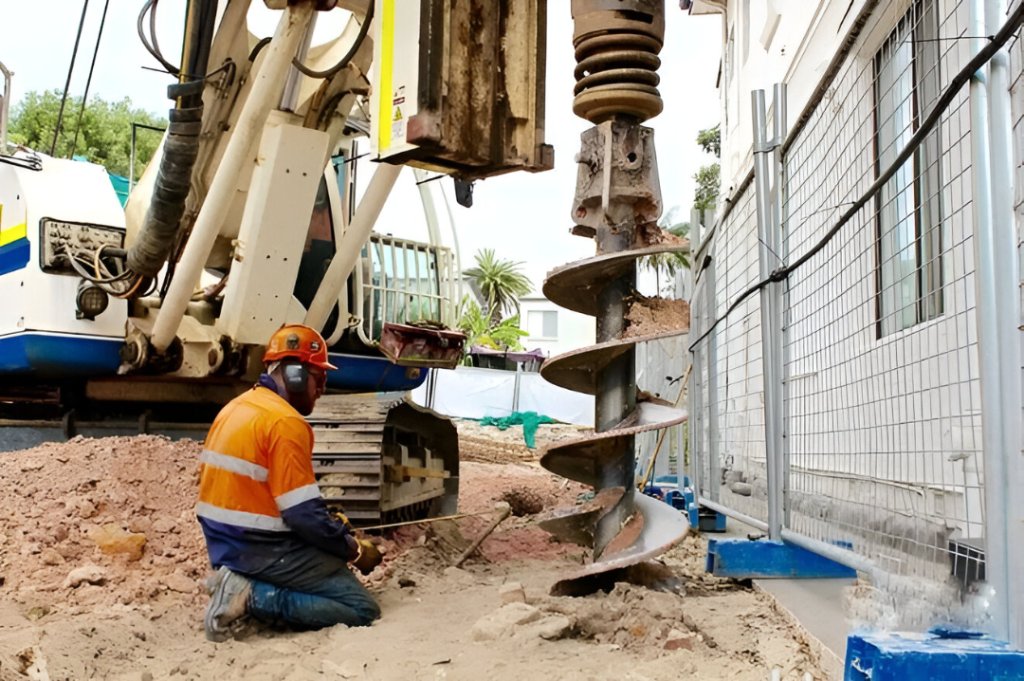
If you’re planning to build in Kampala, there’s one structural decision that will determine the safety, longevity, and cost-efficiency of your project: foundation piling.
Uganda’s capital is known for its complex soil profiles from clay-rich expanses to loose fill and slope-based terrain. A traditional shallow foundation often fails in these conditions, leading to cracks, subsidence, and even structural collapse.
At Smeaton Constructions, we ensure your building stands firm for decades by applying advanced piling solutions tailored to Uganda’s soil realities.
🌍 Understanding Kampala’s Soil Challenges
Kampala’s geography includes:
- Expansive clay soils which swell during rainy seasons and shrink during dry spells
- Loose backfill soil in urban and reclaimed plots
- Steep slopes (e.g., Mutungo, Muyenga) that increase lateral movement risks
- High water tables in areas like Nakawa or Luzira
These conditions make deep foundations a necessity not a luxury.
💡 Poor foundation design is among the top causes of building collapse in East Africa.
🔧 What Is Foundation Piling?
Piling involves driving or boring deep columns into the ground to transfer the structural load from weak surface soil to stronger, deeper strata.
Common types used in Uganda:
- Bored piles – Ideal for quiet residential zones
- Driven precast piles – Fast and cost-effective for larger commercial builds
- Screw piles – Quick installation, good for modular projects
🏗️ Benefits of Piling in Kampala
| Benefit | Why It Matters in Kampala |
|---|---|
| Prevents differential settlement | Crucial on sloped terrain and reclaimed land |
| Handles poor load-bearing soils | Perfect for clay-heavy and loose urban soils |
| Protects against flooding | Elevates foundation above water table risk |
| Increases building lifespan | Minimizes structural strain and long-term cracks |
🧰 Real-Life Example: A Piling Project in Ntinda
In early 2025, Smeaton Constructions completed a multi-level commercial building in Ntinda, Kampala. The site had soft clay up to 10 meters deep.
✅ Solution:
- We used 300mm bored piles, 12 meters deep
- Soil tested by our in-house geotechnical team
- Custom rebar design to handle vertical and lateral loads
📈 Outcome:
- Zero settlement issues 6 months post-build
- Project passed all KCCA inspection stages
See similar work on our Projects Page
🧑🔬 When Do You Need Piling?
If your project meets any of the following, piling is highly recommended:
- Two or more floors
- Located on a slope or hillside
- Near wetlands or reclaimed land
- Constructed on clay or loose fill soil
- Structures with heavy equipment or load-bearing requirements
🏢 Why Choose Smeaton Constructions?
At Smeaton Constructions, we combine engineering precision with local soil expertise to deliver safe, compliant, and cost-effective piling solutions across Uganda.
✅ We offer:
- On-site soil analysis & load testing
- Design and execution of all pile types
- Experienced civil engineers and KCCA-approved practices
- Full foundation-to-roof service under one contract
📞 Contact Us For More
Ready to Build on Solid Ground?
Partner with Smeaton Constructions for trusted piling solutions in Uganda.
📞 +256 758-821-603
📧 smeatonconstructions.ac@gmail.com
🌐 Request a Site Inspection →
❓ FAQ
Q1: Is piling necessary for all buildings in Kampala?
A: Not always. Small single-floor buildings on firm soil may use shallow foundations. But in Kampala’s clay zones or for larger buildings, piling is often essential.
Q2: What does piling cost in Uganda?
A: Cost depends on pile type, depth, and soil conditions. On average, bored piles start from UGX 250,000 per meter. Smeaton offers full estimates after a site survey.
Q3: How long does piling take?
A: Most residential piling projects take 5–10 days depending on depth and soil tests.
